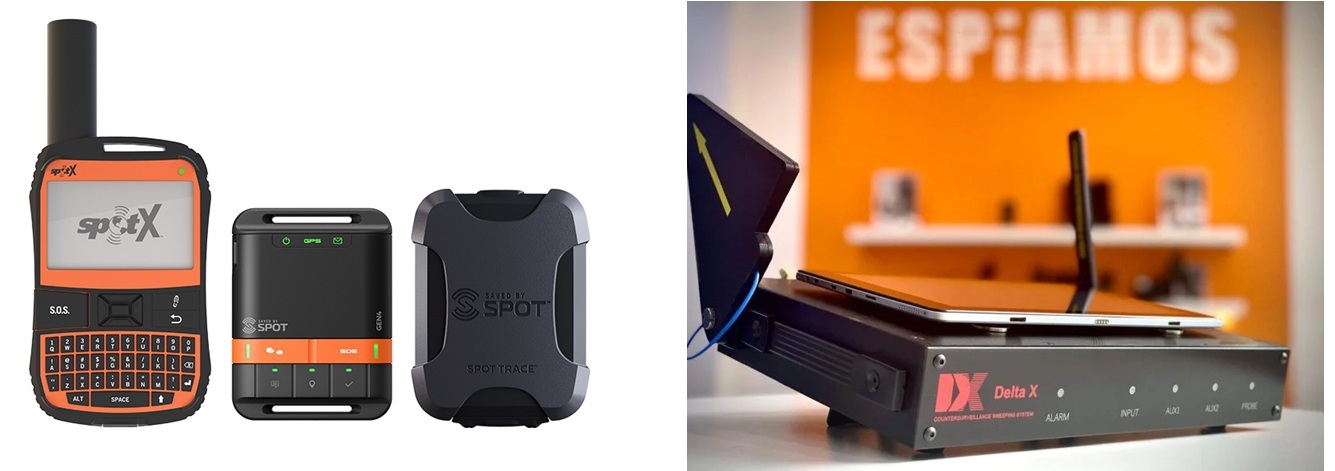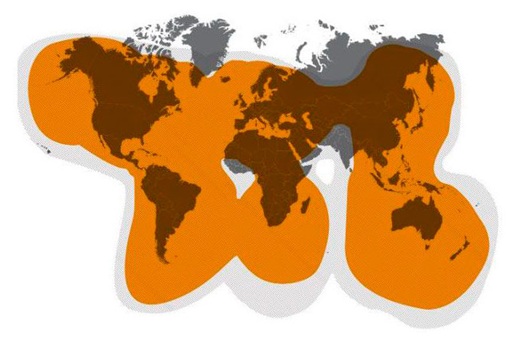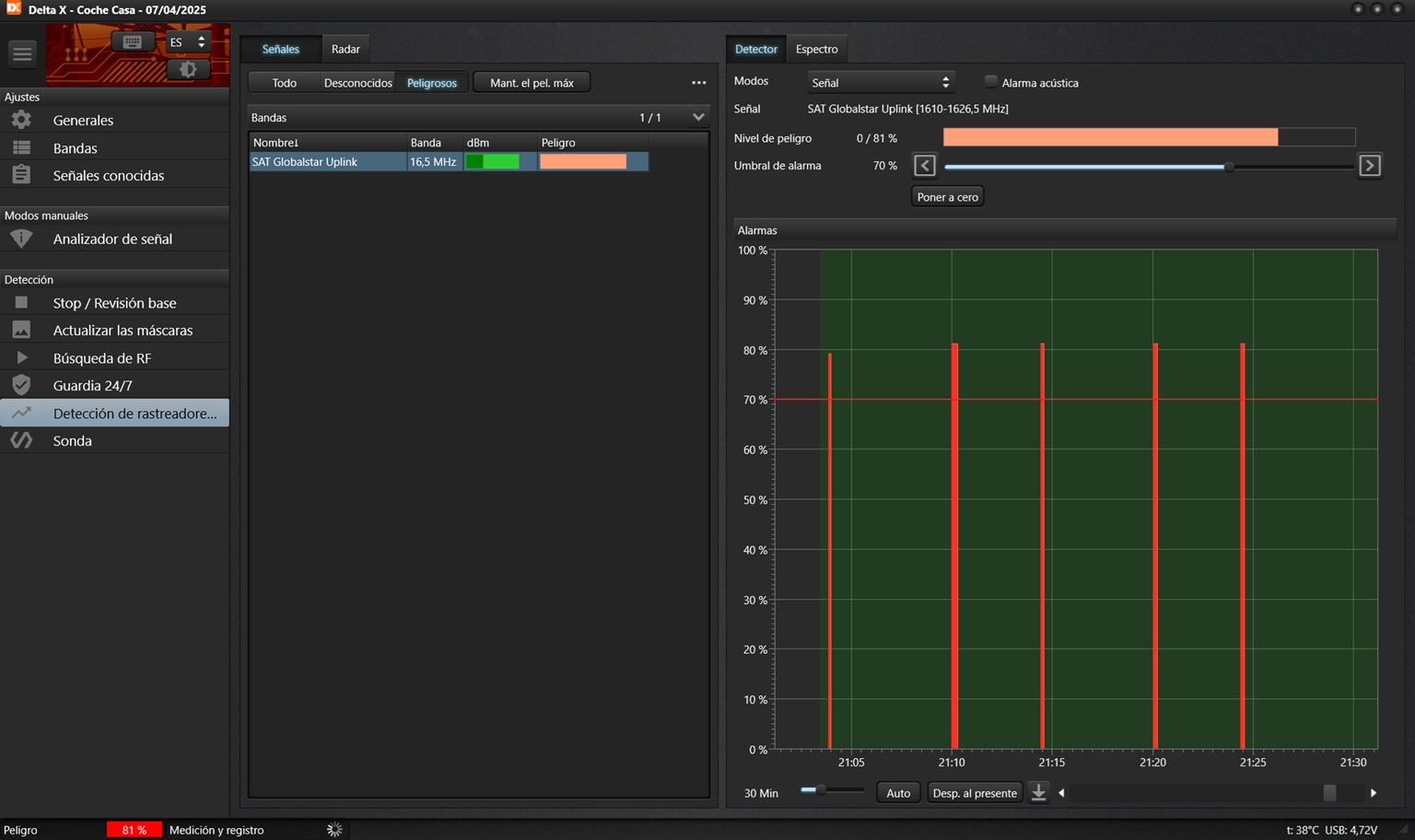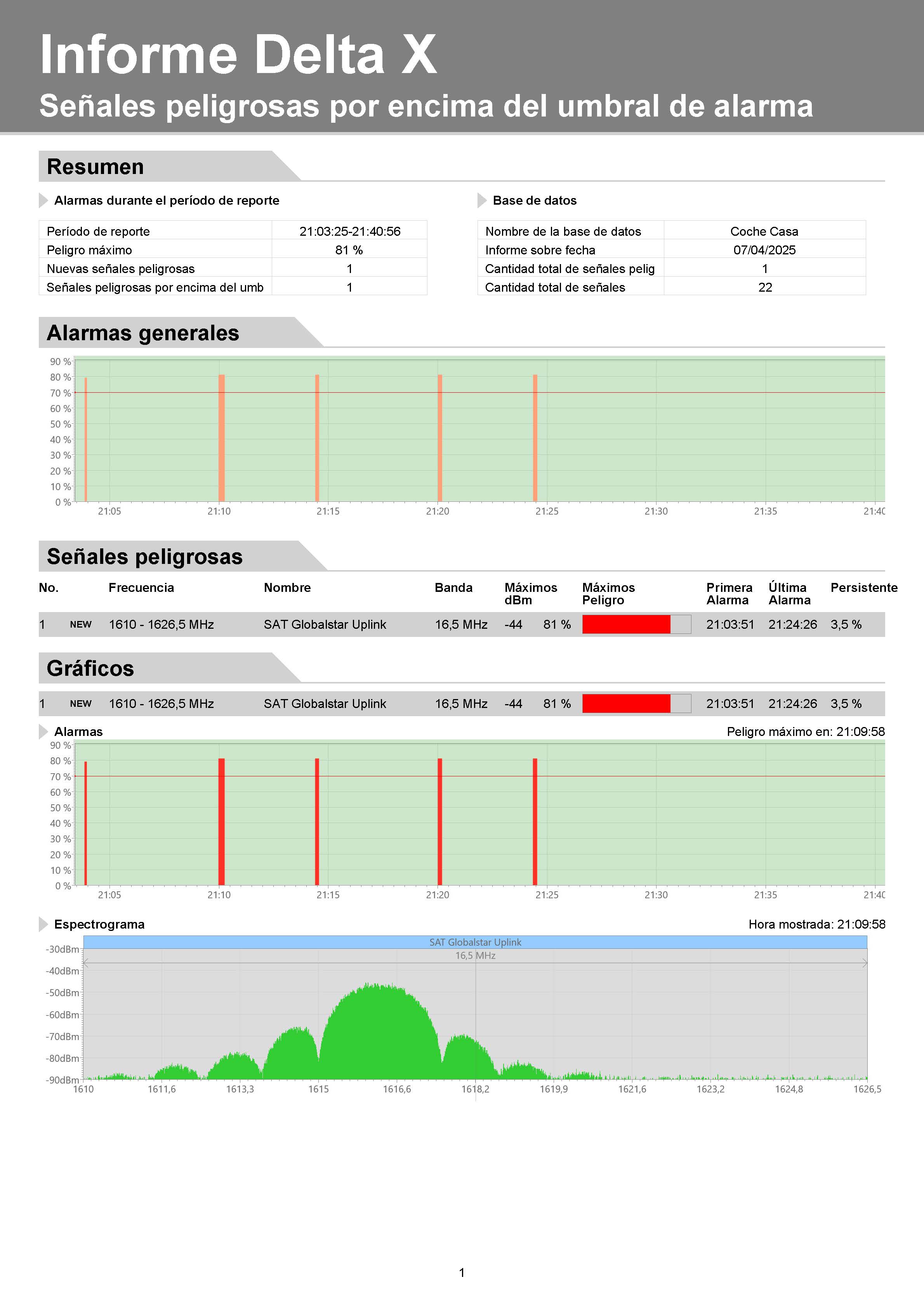Detecting a Globalstar satellite GPS locator is possible thanks to the precision of the Delta X spectrum analyzer . This equipment allows the identification of uplink emissions on specific frequencies used by this type of device, even when they do not incorporate a SIM card or generate constant activity.

Table of Contents
- How does a Globalstar satellite GPS work without a SIM card?
- Globalstar Frequency and its Settings on the Delta X
- Creating the pre-mask in a clean environment
- Activating GPS mode and adjusting thresholds
- Real-time detection and validation
How does a Globalstar satellite GPS work without a SIM card?
A satellite GPS tracker using the Globalstar network works without a SIM card because it transmits directly to the satellite using a predefined uplink channel. This type of device doesn't rely on a land-based cellular network, making it especially useful in areas without cellular coverage , such as rural areas, border territories, or even the middle of the ocean .
Globalstar's satellite coverage spans most of the planet, including mountainous, maritime, and desert regions. This feature allows a tracker to operate uninterrupted even on the high seas , where no cellular network would be able to reach. Therefore, beacons operating with this technology are widely used on vessels, international fleets, high-value transportation, and long-range surveillance scenarios.

The device works by periodically collecting geolocation data , which, when activated, is sent in very short bursts to the nearest satellite in the Globalstar system. These transmissions can occur automatically or following specific events such as movement, leaving a geographic area, or remote activation from a control center.
From a TSCM operator's perspective, these types of transmitters represent a technical challenge: there is no SIM card that can be analyzed with a reader , nor is there a permanent signal that facilitates detection using traditional methods. Therefore, only a properly configured spectrum analyzer like the Delta X can record these isolated, very short-duration, punctual emissions that reveal the presence of a hidden satellite tracker.
Globalstar Frequency and its Settings on the Delta X
The Globalstar system uses the uplink frequency range between 1610 and 1626.5 MHz . This band is not included by default in the Delta X country settings, so it must be entered manually. This step was explained in a previous article, which detailed how to access the Bands section of the menu and register this signal as “Globalstar Uplink” .
It's essential to mark this frequency as high priority and activate the GPS tracker detection option. This will allow the system to generate visual alerts when it detects activity in that range, and to automatically identify it during GPS beacon-specific scanning mode.
In addition, it is advisable to establish an approximate reference power of -85 dBm , which is common for this type of transmission in urban or semi-open environments.
Creating the pre-mask in a clean environment
Before beginning active detection, it is essential to create an environmental mask in an area free of suspicious emissions. This mask will serve as a comparative reference during the analysis and will help detect deviations in the Globalstar band.
As explained in the article on initial Delta X setup , this mask must be created in a remote location (more than 100 meters) from the target, with a minimum capture time of 15 minutes. By recording the environment in the absence of emissions, any subsequent peaks detected at 1610–1626.5 MHz can be considered anomalous with a high degree of reliability.
Once this mask is generated and activated, the operator can begin scanning the suspected location with the confidence that any changes in the spectrum will be visually identifiable.
Activating GPS mode and adjusting thresholds
With the mask active and the Globalstar band registered as known, the next step is to activate the Delta X's specific GPS tracker detection mode. This mode is designed to highlight any emissions that match bands previously flagged as suspected of being used by beacons, such as Globalstar.
Additionally, power thresholds must be correctly configured so that the system does not miss low-intensity signals. In high-risk audits or quiet environments, it is recommended to set the alert threshold between -90 and -85 dBm . This will allow the system to highlight any burst in the 1610–1626.5 MHz band, even if it lasts only a few milliseconds.
The combination of a registered band, active GPS mode, and an adjusted threshold allows for precise monitoring without the need for continuous supervision. The operator can leave the device in automatic mode for hours and review the event log later.
Real-time detection and threat validation
Immediate recognition of the emission pattern
During an active scan, Delta X can identify in real time a short-duration, upward-moving emission within the Globalstar uplink range (1610 – 1626.5 MHz) . This emission appears as a sharp vertical spike in the spectrum and is represented by a visual marker whenever GPS tracker detection mode is active and an appropriate sensitivity threshold is set.

Technical validation using the spectrogram
The Delta X automatically records the frequency, dBm, duration, and exact time of the event. If the spectrum recording option is enabled, the operator can then consult the waterfall mode or timeline to observe the signal's shape. These emissions, typical of Globalstar beacons, are brief, occur in bursts, and do not repeat continuously like conventional telecommunications signals.

There is no room for confusion with mobile signals
A critical advantage of the system is that Globalstar frequencies do not overlap with any cellular bands . Therefore, if periodic, short bursts are detected in the 1610–1626.5 MHz range, there is no doubt that the source is an active satellite transmitter . This is not interference, nor a spike generated by cellular networks, Wi-Fi, or other common systems. This certainty eliminates misinterpretation and makes the detection a conclusive technical test .
Creating reports and documenting evidence
The Delta X allows you to generate a complete technical report that includes all the data recorded during the detection: time, frequency, power, duration, and spectral display of the event. The system also allows you to incorporate operator notes, labels, and observations. which makes it easier to present this information in legal settings or to corporate security departments.
In short, detecting a signal within the Globalstar uplink range, with the characteristics of a periodic burst, medium power, and short duration, is equivalent to confirming the presence of a satellite GPS locator . The Delta X not only makes it possible to visualize such a threat, but also offers all the tools to document it and present it as verifiable evidence .

Conclusions on the detection of Globalstar
Detecting satellite GPS beacons using Globalstar represents a technical challenge that very few devices can overcome. Thanks to its precision, the Delta X allows not only to find these hidden emissions, but also to link them to a specific frequency and behavior .
Manually logging the 1610–1626.5 MHz range and labeling it as Uplink, combined with a well-planned analysis and the use of an environment mask, offers the operator a significant advantage. Whether in technical audits, judicial investigations, or vehicle protection, this system enables the operator to move from suspicion to technical confirmation with verifiable data .
And if an even higher level of specialization is required, at ESPIAMOS® we offer specific training on the use of Delta X for detecting satellite GPS trackers, with real-life exercises and case studies. This training can be conducted in person in Madrid or online, always adapting to the client's needs.






 WhatsApp
WhatsApp Telegram
Telegram


